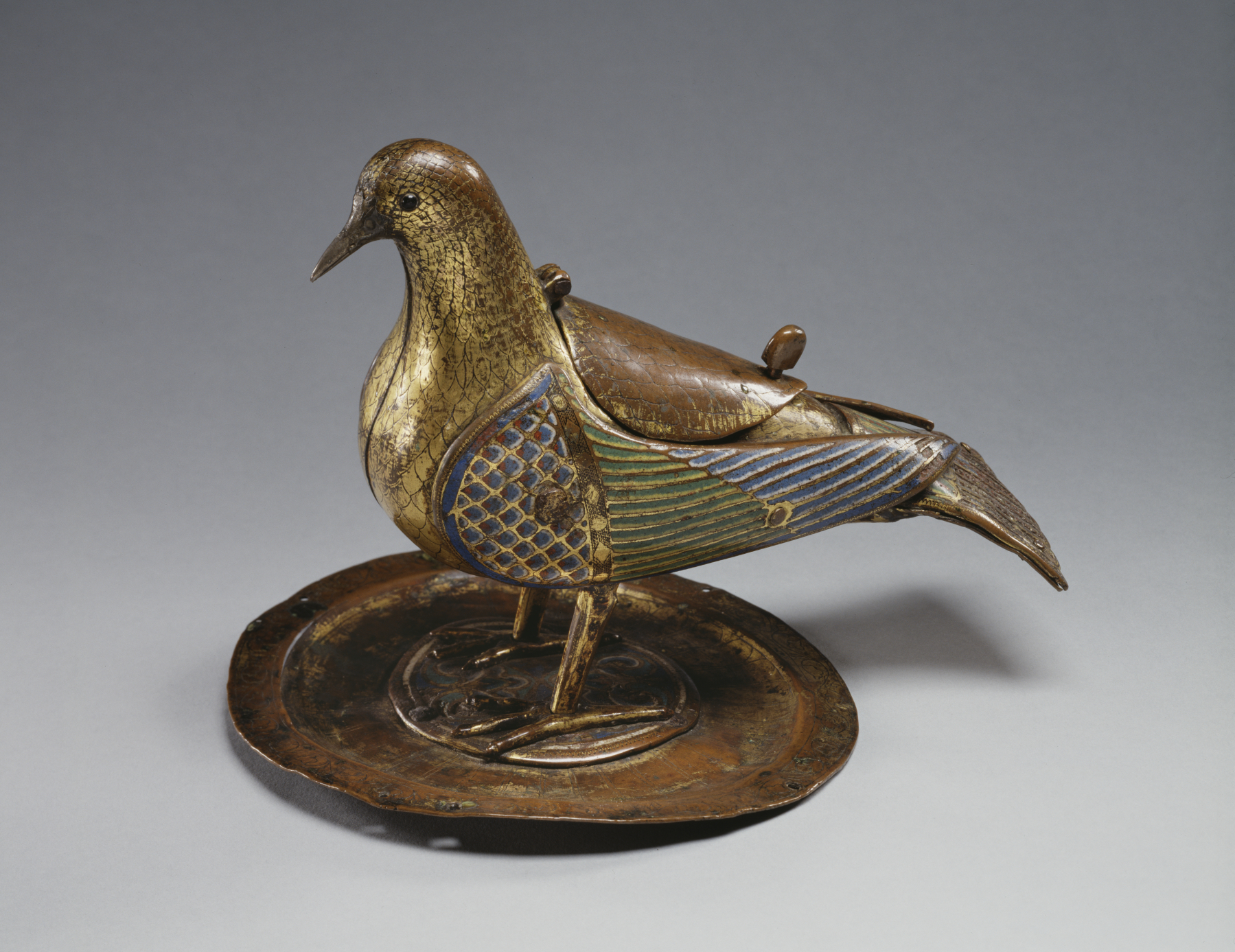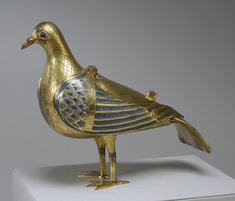Eucharistic Dove
(Medieval Europe )
Used for storing communion wafers, doves such as this were suspended above the altar to signify the presence of the Holy Spirit at the Mass. On this fine, colorful example, the sparkling glass eyes and shimmering enamels on the wings and tail highlight the richness of the material of the liturgical vessel. The wafers were stored in a cavity under a hinged lid on the bird's back.
Provenance
Provenance (from the French provenir, 'to come from/forth') is the chronology of the ownership, custody, or location of a historical object. Learn more about provenance at the Walters.
Emmanuel Chalandon, Lyon, 1877; Georges Chalandon, Paris, 1905, by inheritence; Jacques Seligmann, Paris [date of acquisition unknown], by purchase; Arnold Seligmann, New York [date of acquisition unknown], by transfer; Henry Walters, Baltimore, 1926, by purchase; Walters Art Museum, 1931, by bequest.
Exhibitions
| 2008-2009 | Realms of Faith: Medieval and Byzantine Art from the Walters Art Museum. Museum of Biblical Art, New York; Colby College Museum of Art, Waterville; Joslyn Art Museum, Omaha. |
| 2002-2005 | Realms of Faith: Medieval and Byzantine Art from the Walters Art Museum. Frist Center for the Visual Arts, Nashville. |
| 2001-2002 | Realms of Faith: Medieval and Byzantine Art from the Walters Art Museum. Frist Center for the Visual Arts, Nashville. |
| 1995-1996 | Medieval Art in America 1800-1940, Patterns of Collecting. Palmer Museum of Art, University Park. |
Geographies
France, Limoges (Place of Origin)
Measurements
H: 7 x W: 9 5/16 x D: 6 7/8 in. (17.8 x 23.7 x 17.5 cm)
Credit Line
Acquired by Henry Walters, 1926
Location in Museum
Accession Number
In libraries, galleries, museums, and archives, an accession number is a unique identifier assigned to each object in the collection.
In libraries, galleries, museums, and archives, an accession number is a unique identifier assigned to each object in the collection.
44.77



